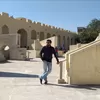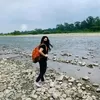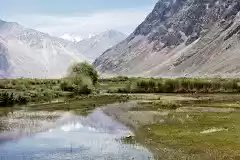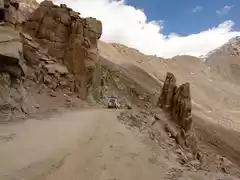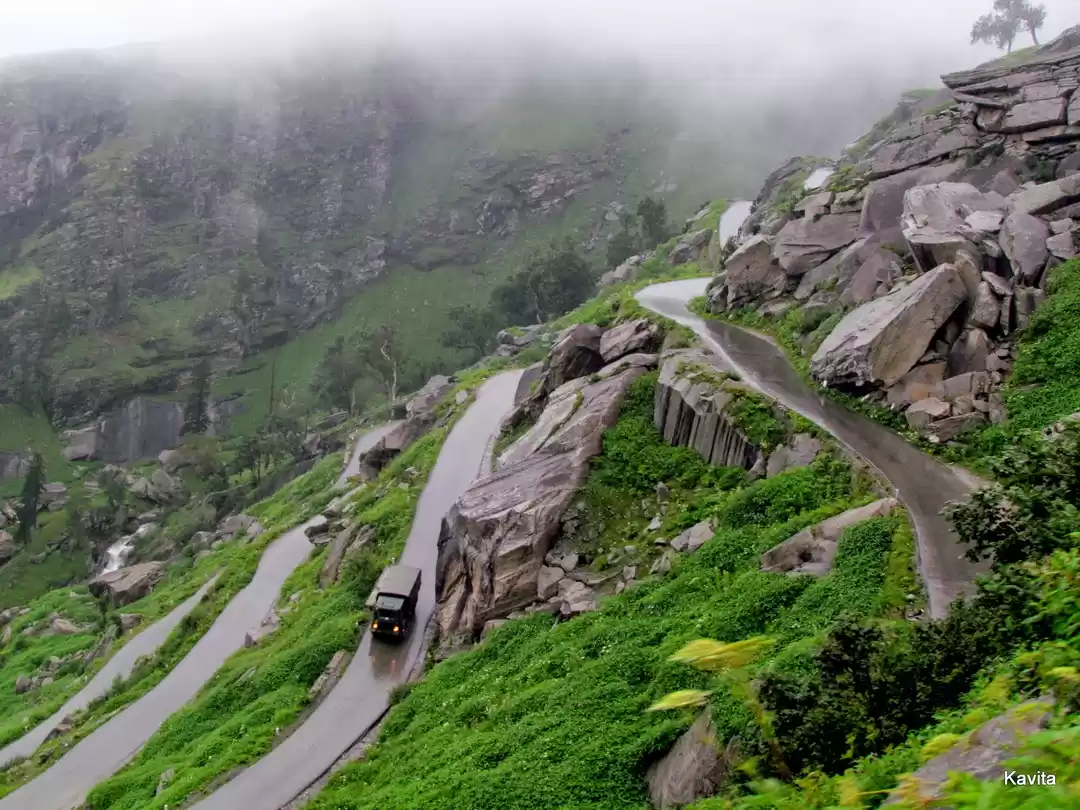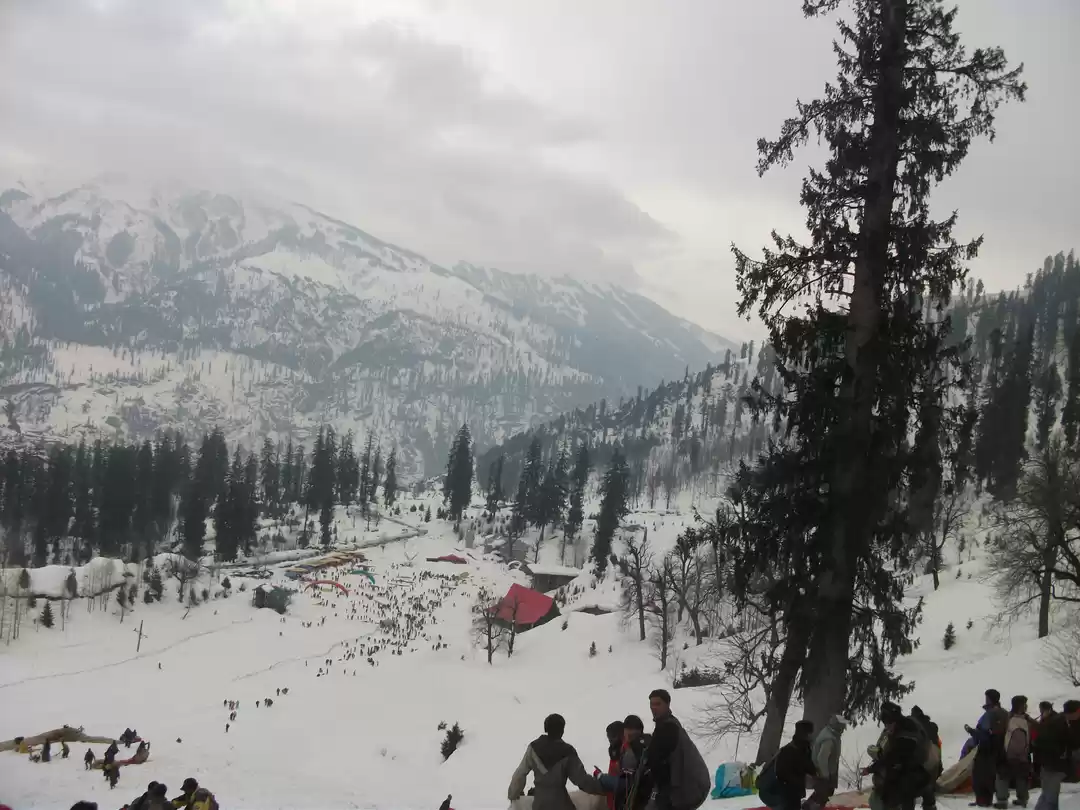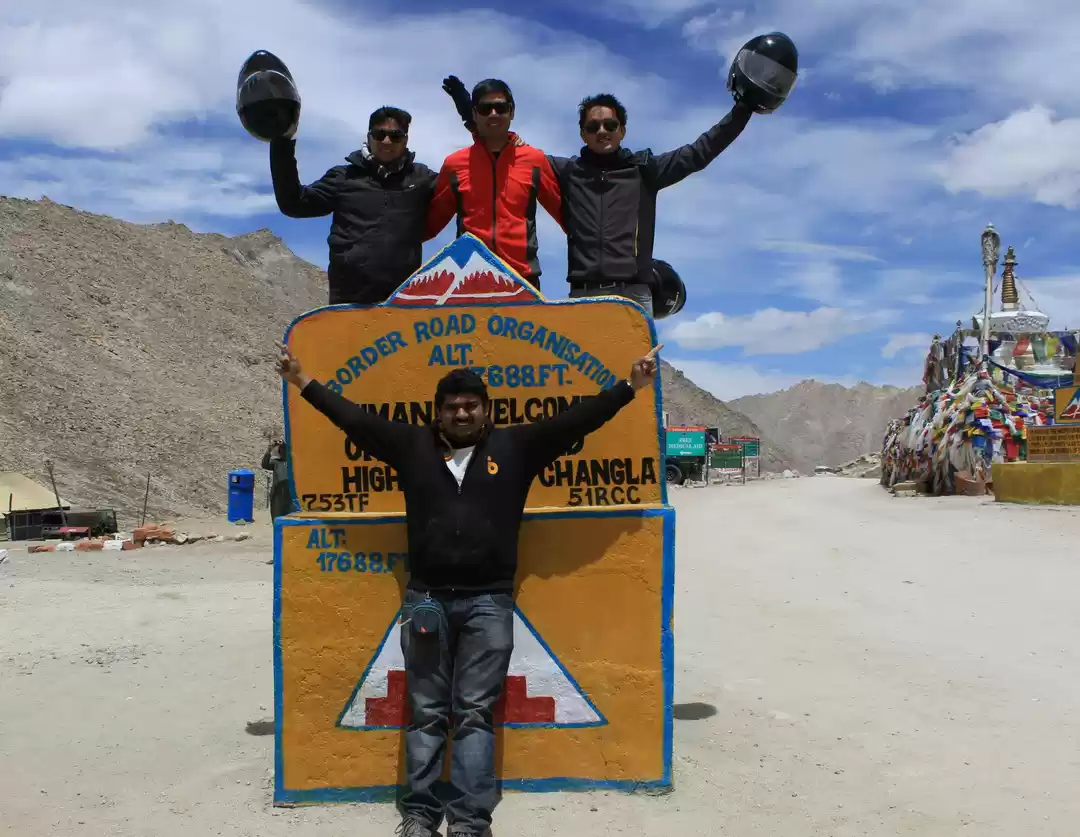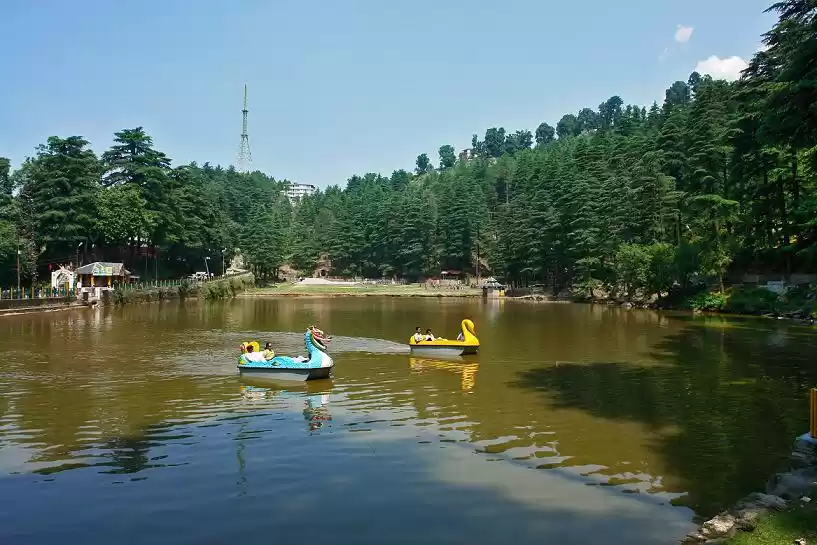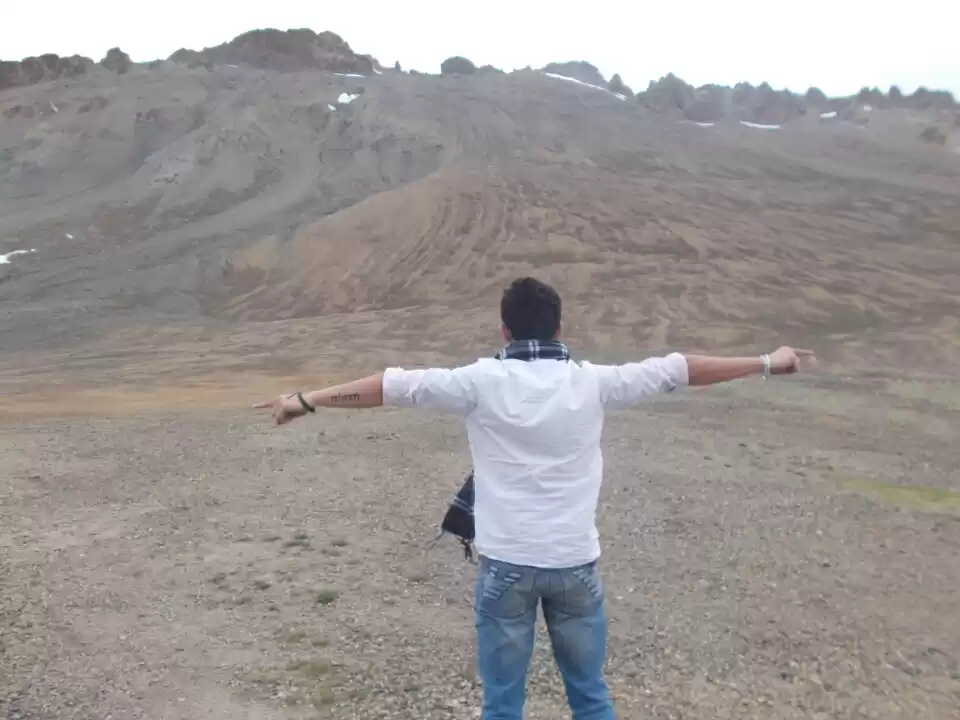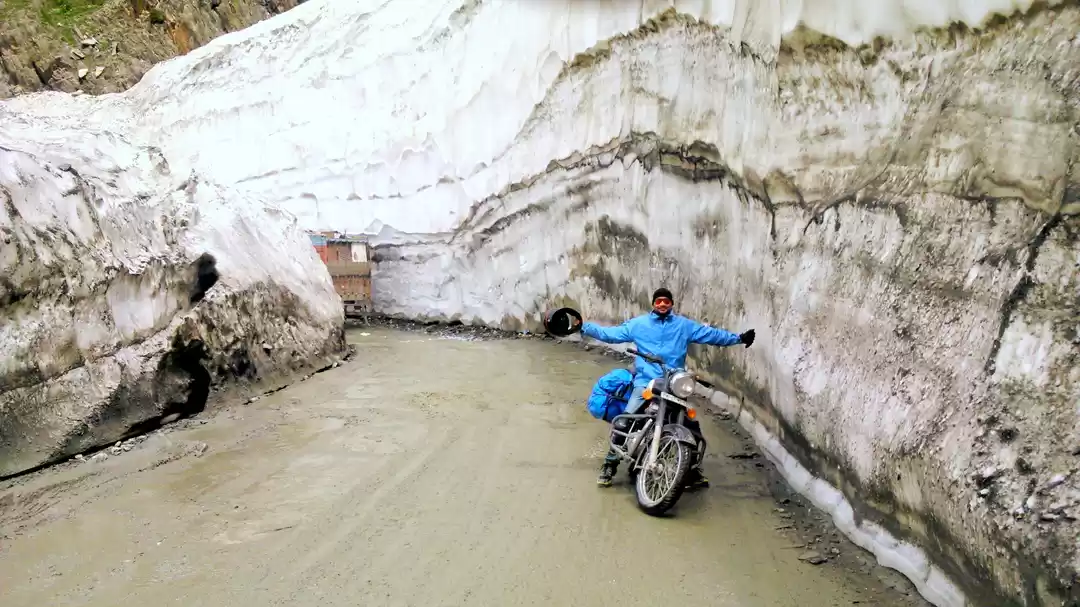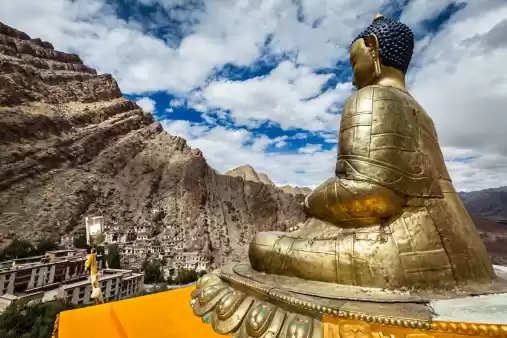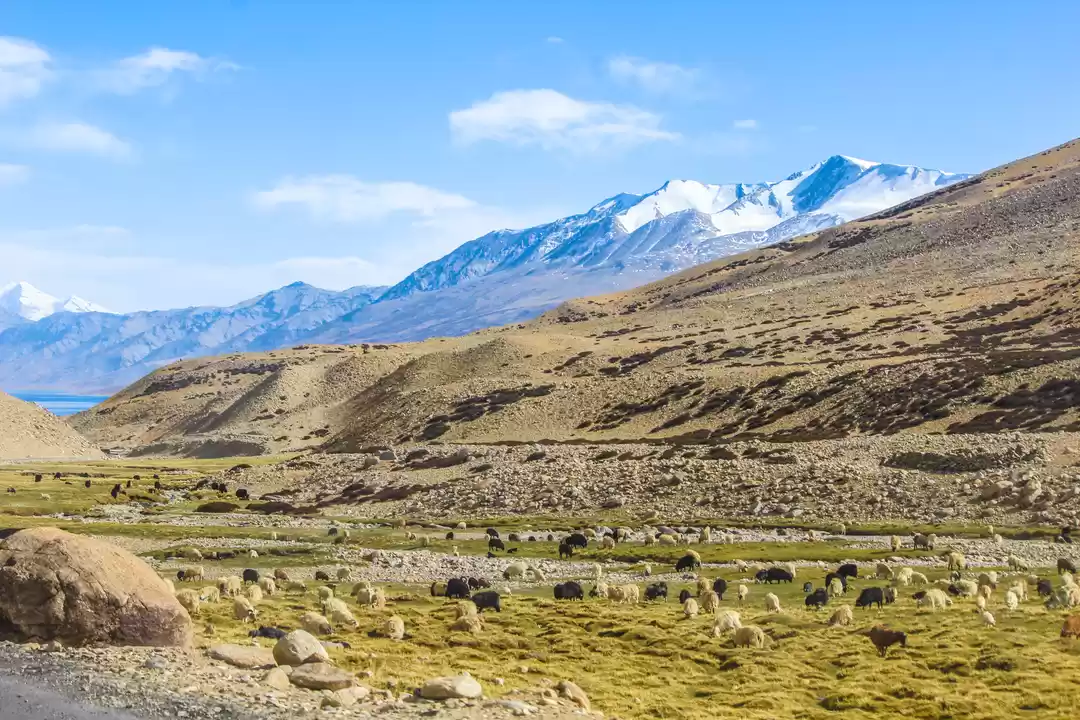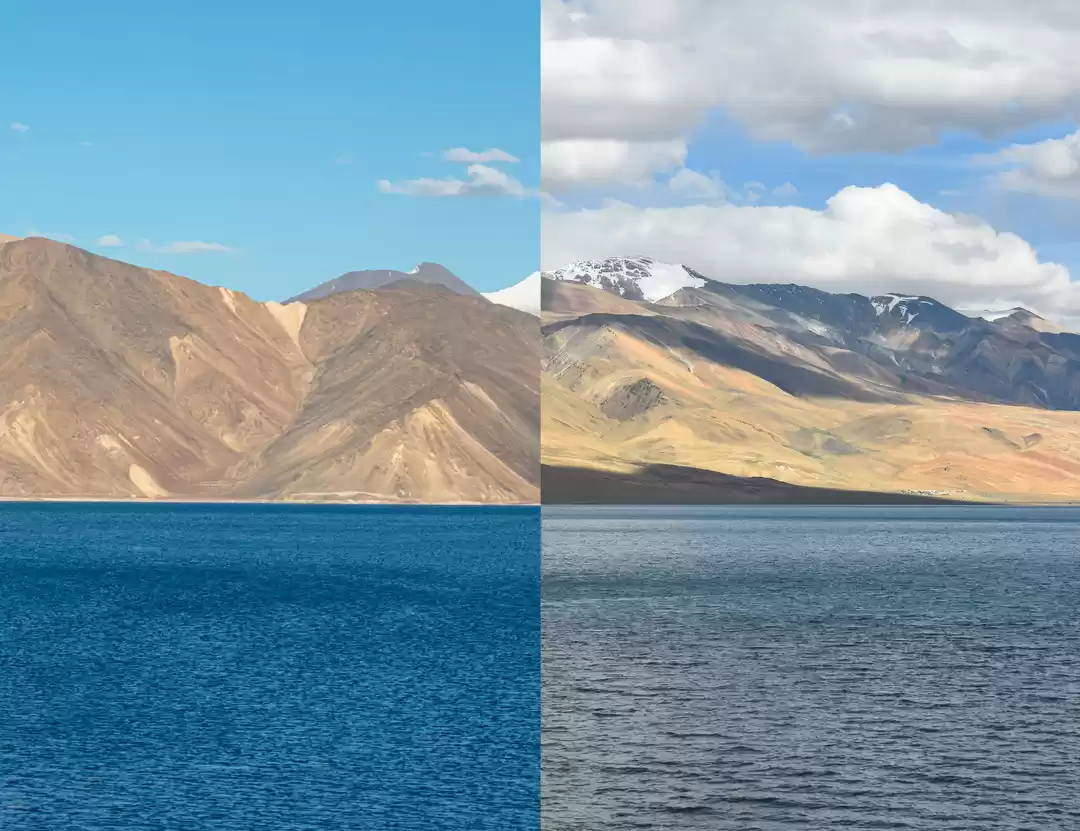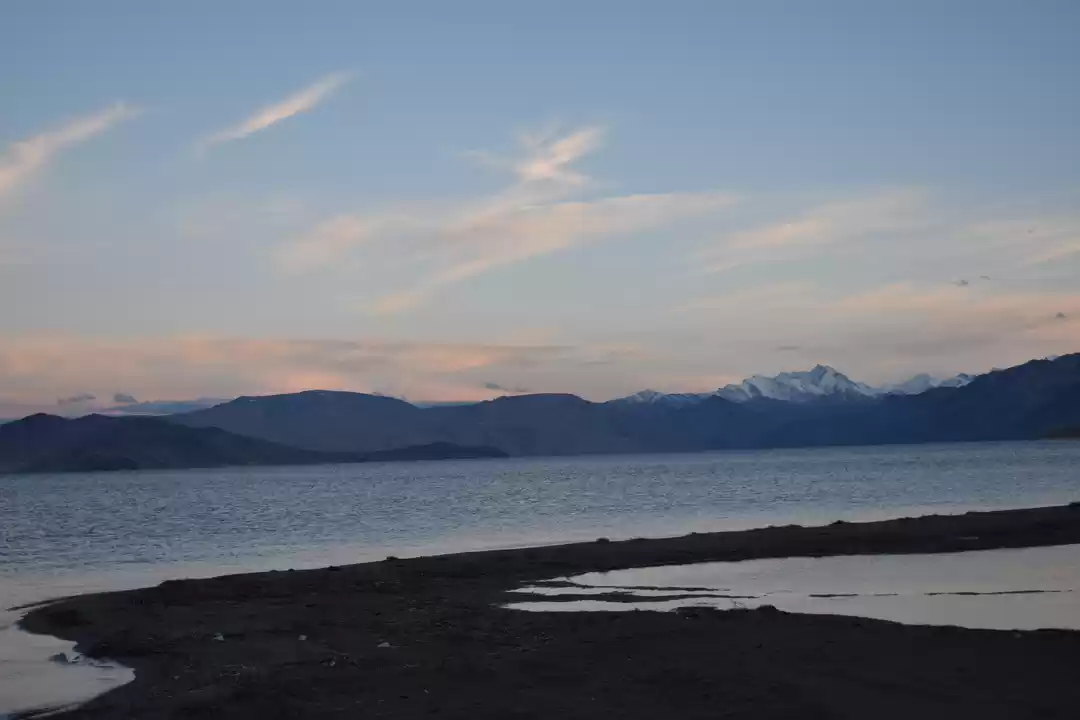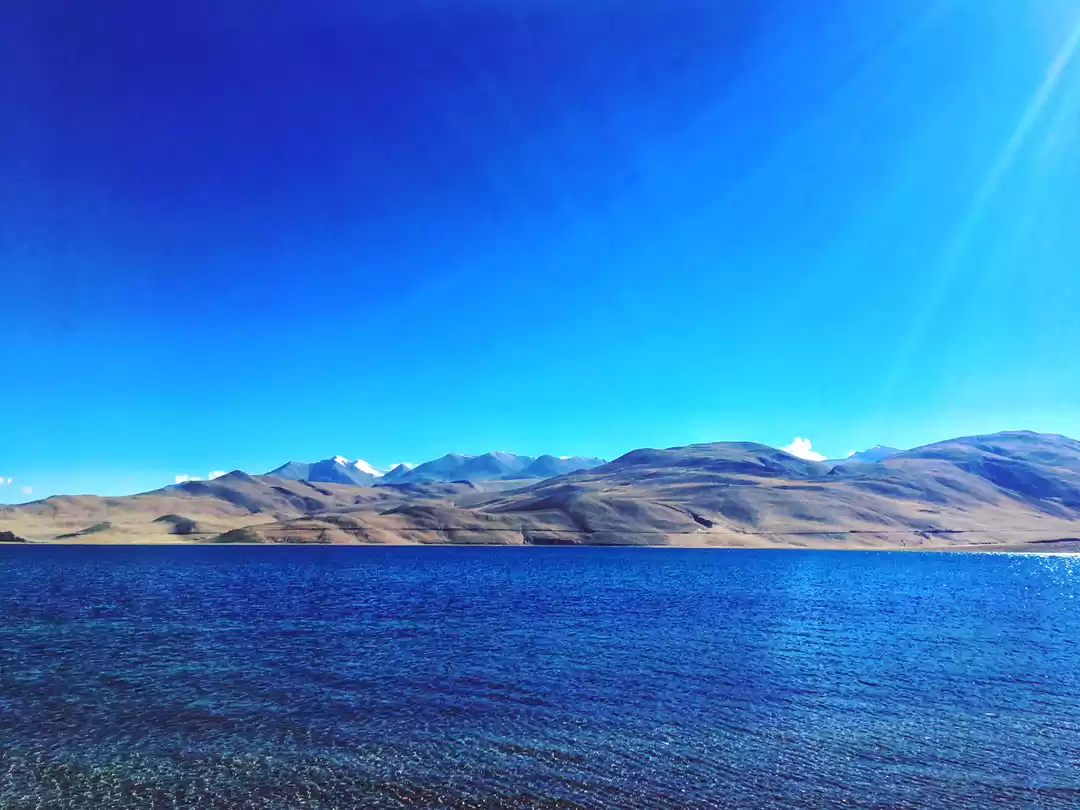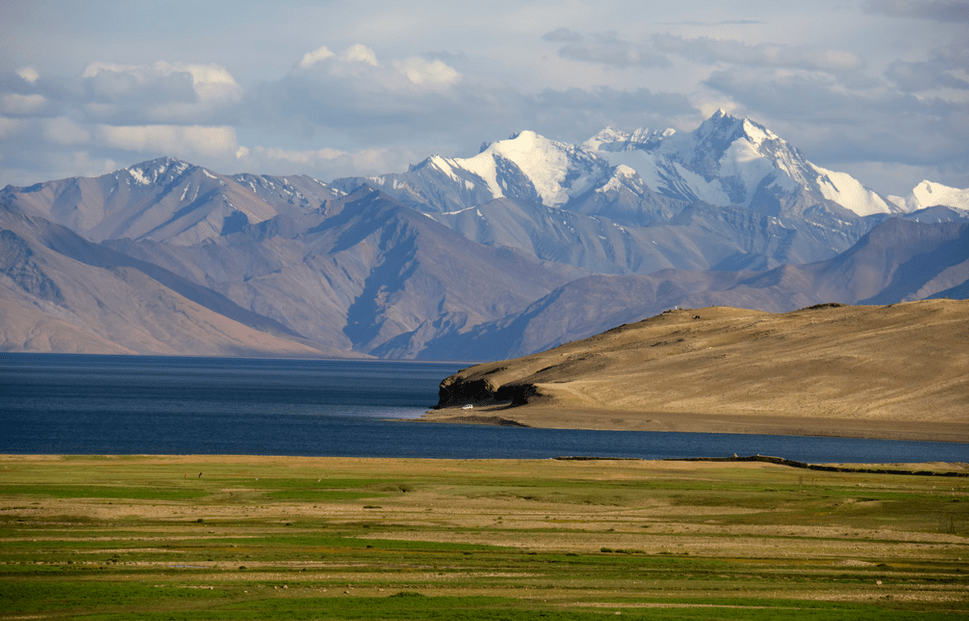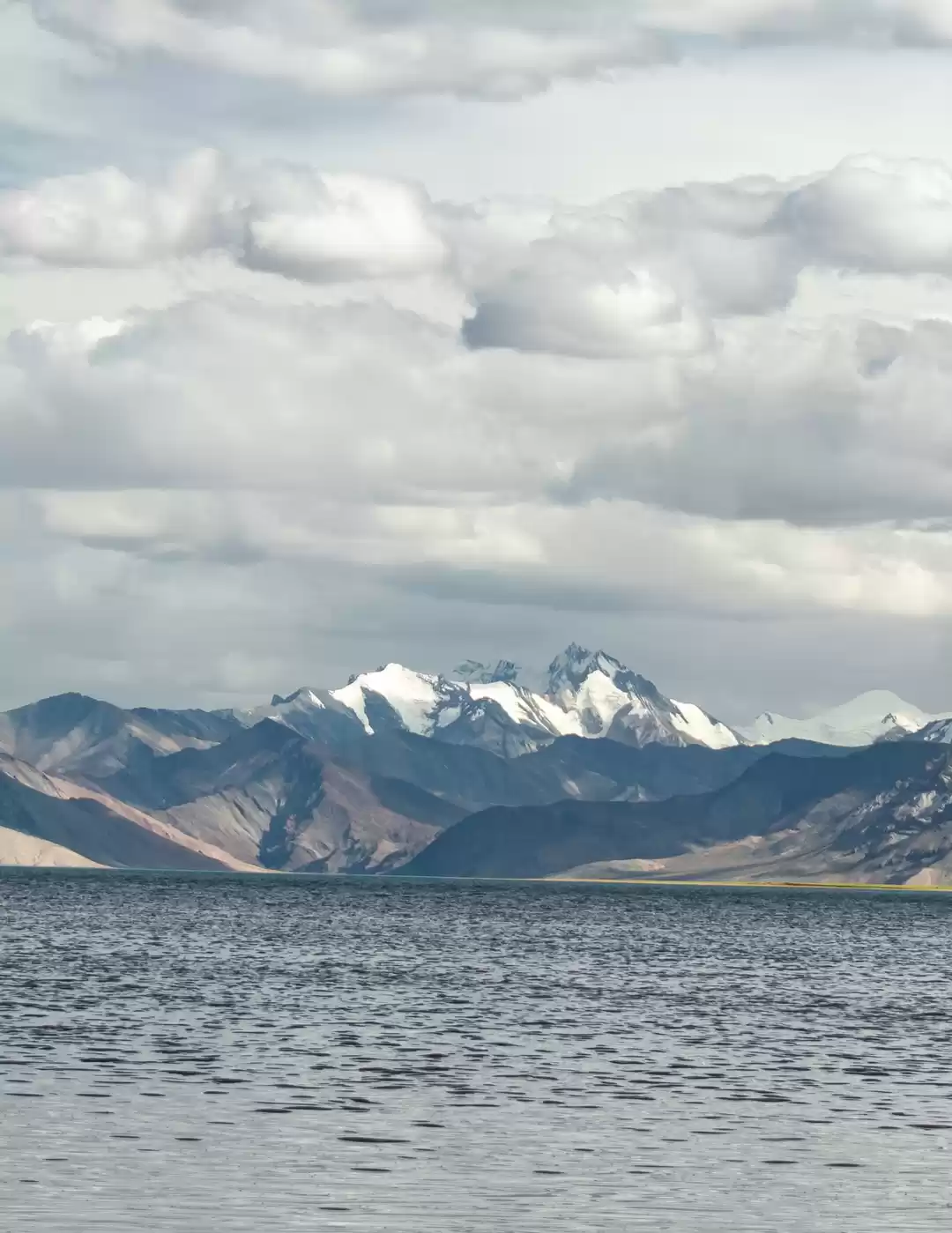Have you ever dreamed of visiting a place that looks like a painting come to life? A place where the sky and the water merge into a dazzling blue, where the mountains and the meadows create a contrast of colors, where the birds and the animals roam freely, and where the people and the culture reflect a rich history and spirituality? If yes, then you should definitely plan a trip to Tso Moriri, one of the most beautiful and serene lakes in India.
Tso Moriri is a high-altitude lake located in the Changthang region of Ladakh, at an elevation of about 4,500 meters above sea level. It is the largest of the high-altitude lakes in the Trans-Himalayan region, covering an area of about 120 square kilometers. It is fed by springs and snowmelt from the surrounding mountains, and drains into the Indus River through a small stream. It is also a part of the Tso Moriri Wetland Conservation Reserve, which is a Ramsar site and a protected area for the conservation of flora and fauna.
Tso Moriri is not only a natural wonder, but also a cultural treasure. It is home to the nomadic Changpa people, who live in tents and rear sheep, goats, and yaks. It is also a sacred place for the Buddhists, who believe that the lake is the abode of the goddess Dorje Gummo. The lake is surrounded by several monasteries, temples, and stupas, which add to its spiritual charm.
Tso Moriri is a perfect destination for those who love nature, adventure, and culture. It offers a variety of attractions and activities that can make your trip memorable and enjoyable. Whether you want to relax by the lake, watch the birds and animals, explore the nearby places, or experience the local life, you will find something to suit your interest and preference.
In this comprehensive travel guide, we will cover everything you need to know about Tso Moriri, such as how to reach, when to visit, what to do, where to stay, and more. We will also provide some useful tips and suggestions to help you plan your trip and make the most of your time at the lake. So, without further ado, let’s get started.
How to Reach Tso Moriri
Tso Moriri is located about 220 kilometers from Leh, the capital of Ladakh. There are three main ways to reach the lake from Leh: by road, by air, or by trekking.
By Road
The most common and convenient way to reach Tso Moriri is by road. You can either hire a taxi, a bike, or a car from Leh, or join a group tour or a package that includes the lake. The road trip from Leh to Tso Moriri takes about 7 to 8 hours, depending on the traffic, weather, and stops. The road is mostly paved, except for some patches of dirt and gravel. The road passes through some scenic and historic places, such as Upshi, Chumathang, Mahe, Sumdo, and Korzok. You will also cross some high-altitude passes, such as Taglang La (5,328 meters) and Namshang La (4,823 meters).
The road trip from Leh to Tso Moriri is an adventure in itself, as you will witness the changing landscape, climate, and culture of Ladakh. You will see the barren and rugged mountains, the green and fertile valleys, the gushing and calm rivers, the colorful and quaint villages, and the diverse and exotic wildlife. You will also experience the thrill and challenge of driving or riding on one of the highest motorable roads in the world.
Some tips and suggestions for traveling by road to Tso Moriri are:
Make sure you have a valid permit to visit the lake and its surroundings, as it is a restricted area. You can obtain the permit from the District Magistrate’s office in Leh, or from any authorized travel agent. You will need to show the permit at various checkpoints along the way.
Make sure you have enough fuel, spare tires, and tools for your vehicle, as there are no petrol pumps or mechanics after Upshi. You can also carry some extra fuel in jerry cans, as the fuel consumption may increase at high altitudes.
Make sure you have enough water, food, and snacks for the journey, as there are no restaurants or shops after Chumathang. You can also carry some dry fruits, chocolates, and energy bars, as they can help you cope with the altitude and the cold.
Make sure you have enough warm clothes, sunglasses, sunscreen, and hats for the journey, as the temperature and the UV rays may vary at different altitudes and times. You can also carry some woolen socks, gloves, and scarves, as they can protect you from the wind and the dust.
Make sure you have enough cash, as there are no ATMs or card machines after Leh. You will need cash to pay for the permit, the taxi, the accommodation, the food, and the entry fees.
Make sure you have enough time, as the road trip may take longer than expected due to traffic, weather, or road conditions. You can also break the journey into two days, and stay overnight at Chumathang or Sumdo, which have some basic guest houses and homestays.
By Air
Another way to reach Tso Moriri is by air. You can take a flight from Leh to Korzok, which is the nearest village to the lake, about 20 kilometers away. The flight takes about 40 minutes, and offers a spectacular aerial view of the lake and the mountains. The flight is operated by a private company, called Himalayan Heli Services, which charges about 25,000 rupees per person for a round trip. The flight is available only from June to September, and depends on the weather and the demand. You can book the flight online, or through a travel agent in Leh.
The flight from Leh to Korzok is a quick and comfortable way to reach Tso Moriri, as you can avoid the long and tiring road trip. You can also save time and energy, and enjoy more time at the lake. However, the flight is also very expensive and limited, and may not suit everyone’s budget and schedule.
Some tips and suggestions for traveling by air to Tso Moriri are:
Make sure you have a valid permit to visit the lake and its surroundings, as it is a restricted area. You can obtain the permit from the District Magistrate’s office in Leh, or from any authorized travel agent. You will need to show the permit at the airport and at the lake.
Make sure you have enough warm clothes, sunglasses, sunscreen, and hats for the flight, as the temperature and the UV rays may be higher at the lake than at Leh. You can also carry some woolen socks, gloves, and scarves, as they can protect you from the cold and the wind.
Make sure you have enough water, food, and snacks for the flight, as there are no facilities or services at the Korzok airport. You can also carry some dry fruits, chocolates, and energy bars, as they can help you cope with the altitude and the hunger.
Make sure you have enough cash, as there are no ATMs or card machines at Korzok. You will need cash to pay for the accommodation, the food, and the entry fees.
Make sure you have enough time, as the flight may be delayed or cancelled due to weather or technical issues. You can also check the flight status and availability online, or through a travel agent in Leh.
By Trekking
The third way to reach Tso Moriri is by trekking. You can trek from various places in Ladakh, such as Rumtse, Tsokar, Nyoma, or Hanle, to the lake. The trekking routes vary in length, difficulty, and duration, depending on the starting point, the ending point, and the itinerary. The trekking routes pass through some remote and rugged terrains, such as valleys, plateaus, passes, and gorges. The trekking routes also offer some amazing views of the lake and the mountains, as well as the opportunity to witness the nomadic life and the wildlife.
The trekking from Ladakh to Tso Moriri is an adventurous and rewarding way to reach the lake, as you can experience the beauty and the diversity of the region. You can also challenge yourself and test your endurance, as you will be walking at high altitudes and in harsh conditions. However, the trekking is also very demanding and risky, and requires a lot of preparation and precaution.
Some tips and suggestions for trekking to Tso Moriri are:
Make sure you have a valid permit to visit the lake and its surroundings, as it is a restricted area. You can obtain the permit from the District Magistrate’s office in Leh, or from any authorized travel agent. You will need to show the permit at various checkpoints along the way.
Make sure you have a guide, a porter, and a cook for the trek, as they can help you with the route, the luggage, and the food. You can hire them from Leh, or from any trekking agency in Ladakh. You will also need to pay them a daily wage, and provide them with food and accommodation.
Make sure you have enough equipment, gear, and supplies for the trek, such assuch as a tent, a sleeping bag, a mattress, a stove, a utensil, a water bottle, a flashlight, a first-aid kit, a map, a compass, etc. You can buy or rent them from Leh, or from any trekking agency in Ladakh. You will also need to carry enough food, water, and snacks for the trek, as there are no facilities or services along the way.
Make sure you have enough clothing, footwear, and accessories for the trek, such as a jacket, a sweater, a t-shirt, a trouser, a cap, a scarf, a glove, a sock, a boot, a sunglass, a sunscreen, a lip balm, etc. You will need to dress in layers, as the temperature and the wind may change at different altitudes and times. You will also need to protect yourself from the sun, the dust, and the cold.
Make sure you have enough fitness, stamina, and acclimatization for the trek, as you will be walking at high altitudes and in low oxygen levels. You will need to prepare yourself physically and mentally, as you may face some challenges and difficulties, such as fatigue, headache, nausea, dizziness, breathlessness, etc. You will also need to follow some precautions and guidelines, such as drinking enough water, eating light and nutritious food, taking rest and breaks, avoiding alcohol and smoking, etc.
Best Time to Visit Tso Moriri
Tso Moriri is accessible and open for visitors throughout the year, except for some months in winter, when the road may be blocked by snow. However, the best time to visit the lake depends on your interest, activity, and preference. The lake and its surroundings have different climatic conditions, seasons, and festivals, which offer different experiences and attractions.
Summer (June to August)
Summer is the peak season and the most popular time to visit Tso Moriri, as the weather is pleasant and comfortable, with clear skies and moderate temperatures. The average temperature ranges from 15 to 25 degrees Celsius during the day, and from 5 to 15 degrees Celsius during the night. The lake is full and fresh, reflecting the blue sky and the green mountains. The meadows and the pastures are lush and blooming, attracting various birds and animals. The nomads and the villagers are busy and cheerful, celebrating their festivals and rituals.
Summer is the best time to visit Tso Moriri if you want to enjoy the scenic beauty, the wildlife, and the culture of the lake and its surroundings. You can also indulge in various activities, such as camping, bird watching, photography, etc. You can also witness and participate in some festivals, such as the Korzok Gustor, which is held in July or August at the Korzok Monastery. It is a two-day festival, where the monks perform masked dances and rituals, and the locals display their arts and crafts.
Winter (November to February)
Winter is the off-season and the least popular time to visit Tso Moriri, as the weather is harsh and cold, with cloudy skies and freezing temperatures. The average temperature ranges from -5 to 5 degrees Celsius during the day, and from -20 to -10 degrees Celsius during the night. The lake is frozen and white, creating a contrast with the brown mountains. The meadows and the pastures are barren and dry, with few birds and animals. The nomads and the villagers are isolated and quiet, staying indoors and surviving the winter.
Winter is the best time to visit Tso Moriri if you want to experience the extreme and adventurous side of the lake and its surroundings. You can also witness the rare and unique phenomenon of the frozen lake, which is a sight to behold. You can also indulge in some activities, such as ice skating, snowshoeing, or snow camping, which are thrilling and challenging.
Spring (March to May) and Autumn (September to October)
Spring and autumn are the shoulder seasons and the moderate times to visit Tso Moriri, as the weather is mild and pleasant, with clear skies and comfortable temperatures. The average temperature ranges from 10 to 20 degrees Celsius during the day, and from 0 to 10 degrees Celsius during the night. The lake is calm and clear, reflecting the changing colors of the sky and the mountains. The meadows and the pastures are green and vibrant, with various flowers and herbs. The nomads and the villagers are active and friendly, preparing for the summer or the winter.
Spring and autumn are the best times to visit Tso Moriri if you want to avoid the crowd and the cost of the summer, and the cold and the risk of the winter. You can also enjoy the scenic beauty, the wildlife, and the culture of the lake and its surroundings, without any hassle or inconvenience. You can also indulge in various activities, such as camping, bird watching, photography, etc. You can also witness and participate in some festivals, such as the Losar, which is held in February or March at the Korzok Monastery. It is the Tibetan New Year festival, where the monks and the locals perform prayers, dances, and rituals, and exchange gifts and greetings.
Things to Do at Tso Moriri
Tso Moriri is a paradise for nature lovers, adventure seekers, and culture enthusiasts. It offers a variety of things to do that can make your trip memorable and enjoyable. Whether you want to relax by the lake, watch the birds and animals, explore the nearby places, or experience the local life, you will find something to suit your interest and preference.

Here are some of the things that you can do at Tso Moriri:
Camping
One of the best things to do at Tso Moriri is to camp by the lake and enjoy the beauty and the tranquility of the place. You can pitch your own tent, or rent one from the locals or the agencies. You can also stay in a homestay or a guest house, which are available in Korzok and some other villages.
Camping at Tso Moriri will give you a chance to witness the stunning sunrise and sunset, the starry night sky, and the changing colors of the lake. You can also enjoy the bonfire, the music, and the stories of the locals and the fellow travelers. Camping at Tso Moriri will also give you a sense of adventure, as you will be living in a remote and rugged place, with minimal facilities and amenities.
Bird Watching
Another thing to do at Tso Moriri is to watch the birds and the animals that inhabit the lake and its surroundings. The lake is a haven for various species of birds, such as the black-necked crane, the bar-headed goose, the ruddy shelduck, the brown-headed gull, the great crested grebe, etc. The lake is also home to some rare and endangered species of animals, such as the Tibetan wild ass, the Tibetan gazelle, the Tibetan antelope, the Tibetan wolf, the snow leopard, etc.
Bird watching at Tso Moriri is a rewarding and relaxing activity, as you can observe and admire the beauty and the behavior of the birds and the animals. You can also learn about their names, features, habits, and habitats. You can also capture some amazing photos and videos of the birds and the animals, as they pose and play in their natural environment.
Photography
Another thing to do at Tso Moriri is to take photos and videos of the lake and its surroundings. The lake is a photographer’s delight, as it offers stunning views, rich colors, and varied angles. You can capture the beauty and the charm of the lake, the mountains, the meadows, the birds, the animals, the people, and the culture. You can also experiment with different techniques, such as time-lapse, panorama, HDR, etc. You can also create some amazing memories and stories with your photos and videos, and share them with your friends and family.
Photography at Tso Moriri is a fun and creative activity, as you can express yourself and your vision through your camera. You can also learn and improve your skills, as you will face some challenges and opportunities, such as lighting, composition, focus, etc. You can also enjoy and appreciate the nature and the culture of the lake and its surroundings, as you will observe and admire them closely and carefully.
Conclusion
Tso Moriri is a mesmerizing lake in Ladakh that offers a unique and unforgettable experience to its visitors. It is a place where you can witness the natural beauty, cultural heritage, and adventure opportunities of the region. You can also enjoy various activities, such as camping, bird watching, photography, etc., that can make your trip memorable and enjoyable.
So, what are you waiting for? Book your ticket, tour, or stay today, and get ready to explore the beauty and the charm of Tso Moriri. You can also contact us for more information, or check out some of the links and resources below for further reading or booking.



